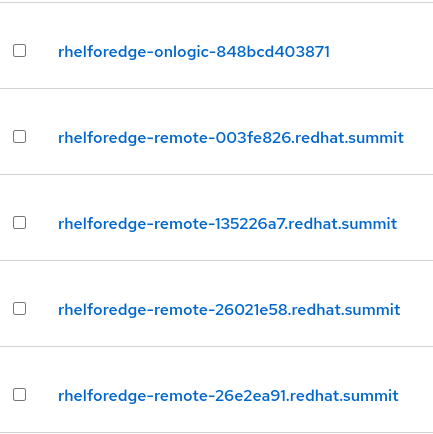Automation at the Edge, Summit 2022
Automation at the Edge, Summit 2022
As some of you may know, Red Hat Summit was back in person in Boston last week. For those who are not familiar, Red Hat Summit is the premier enterprise open source event for IT professionals to learn, collaborate, and innovate on technologies from the datacenter and public cloud to the edge and beyond. Red Hat made a lot of exciting announcements, with several that included Red Hat Ansible Automation Platform. If you could not make the event or would like to revisit some of the content, you can access any session on demand.
One of the big announcements at Summit was the unveiling of new levels of security from the software supply chain to the edge. In Ansible Automation Platform 2.2, Red Hat is introducing a technical preview of Ansible content signing technology. The new capability helps with software supply chain security by enabling automation teams to validate that the automation content being executed in their enterprise is verified and trusted.
With the announcement of this new edge capability, we showcased a session for Ansible and edge that is available on demand. The session "GitOps your distributed edge computing model with Red Hat Ansible Automation Platform" covers how Ansible Automation Platform, in combination with GitOps, can decrease the time to market and repair time to deploy and operate network edge infrastructure. It includes a demo that shows how to describe a deployment in Git, which works as a single source of truth. You will be able to see how Ansible Automation Platform enforces the correct state of the network infrastructure of a large-scale organization and its tracking through IT Service Management.
Scaling automation anywhere using Ansible Automation Platform Red Hat introduced new cross-portfolio edge capabilities, including features in Ansible Automation Platform that solves the management and automation needs to drive visibility and consistency across an organization's edge deployments.
The session "Ansible Automation Platform 2 automation mesh-starting locally, scaling globally" covers how to scale automation to successfully execute in distributed edge locations.
Automating RHEL at the edge with Ansible
If you watched the keynote presentation, you heard about the release of a SaaS Edge Manager. However, we realize not everyone can use the cloud to manage their fleet. Below is how to add a postscript to your kickstart file to register your devices directly to an Ansible Automation Platform inventory so you can use it to manage your fleet.
%post # Create ansible playbook to register device to Ansible automation platform cat > /tmp/add_to_aap.yml <<EOF --- - hosts: localhost vars: aap_url=https://AAPHOST.fqdn.com/api/v2/inventories/CHANGEME/hosts/ aap_username=changeme aap_password=changeme gather_facts: true tasks: - name: create hostname from regex of mac address ansible.builtin.set_fact: edge_hostname: "{{ ansible_default_ipv4.macaddress | replace(':','') }}" - name: set hostname to mac ansible_all_ipv4_address ansible.builtin.hostname: name: "summit-demo-{{ edge_hostname }}" use: systemd - name: Update Ansible Tower inventory uri: url: "{{ aap_url }}" user: "{{ aap_ks_user }}" password: "{{ aap_ks_password }}" method: POST body: name: "{{ ansible_hostname }}" variables: '{ipaddress: "{{ ansible_all_ipv4_addresses }}", macaddress: "{{ ansible_default_ipv4.macaddress }}" }' force_basic_auth: yes status_code: 201 body_format: json validate_certs: no EOF ansible-playbook /tmp/add_to_aap.yml %end
Step 1: Inventory creation
-
Create the inventory in Ansible Automation Platform, and get the inventory number.
-
Get the URL: in this example, the inventory ID is 2:

https://AAPHOST.fqdn.com/#/inventories/inventory/2/details -
Assign aap_url in vars section:
aap_url = https://AAPHOST.fqdn.com/api/v2/inventories/2/hosts/
Step 2: Create credentials in Ansible Automation Platform
Assign credentials to aap_ks_user and aap_ks_password in the Access Users tab in Ansible Automation Platform.
Step 3: Check Ansible Automation Platform
You should now see your devices in Ansible Automation Platform after they boot up.
